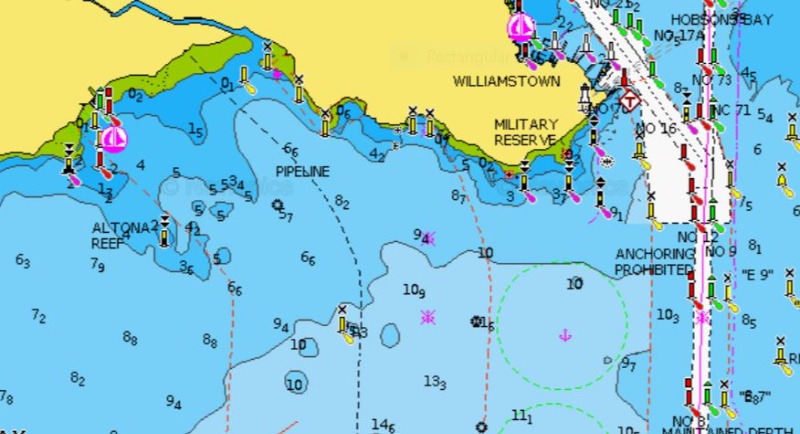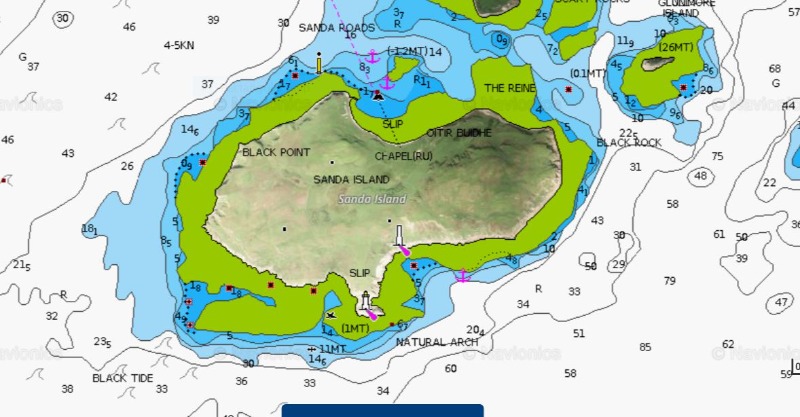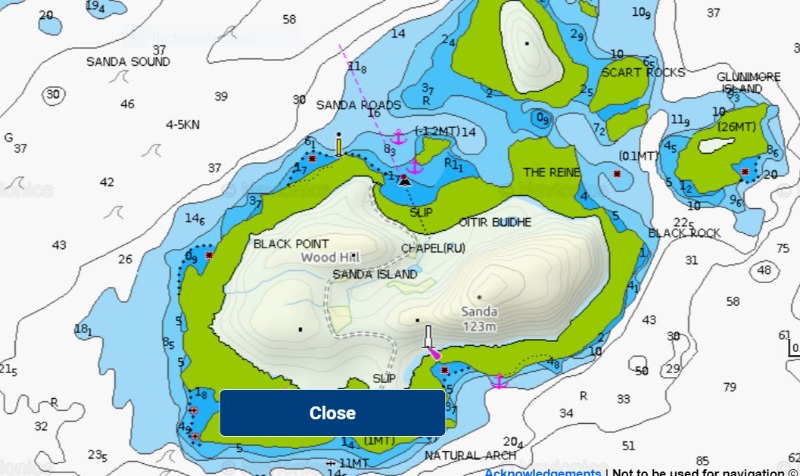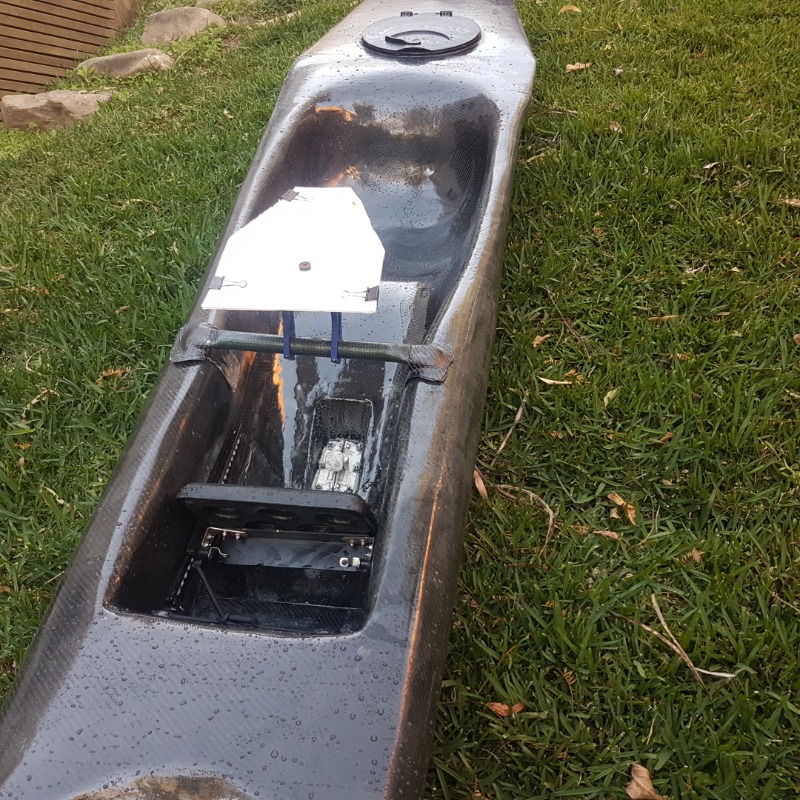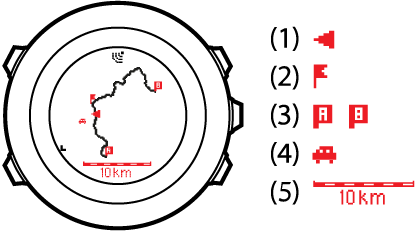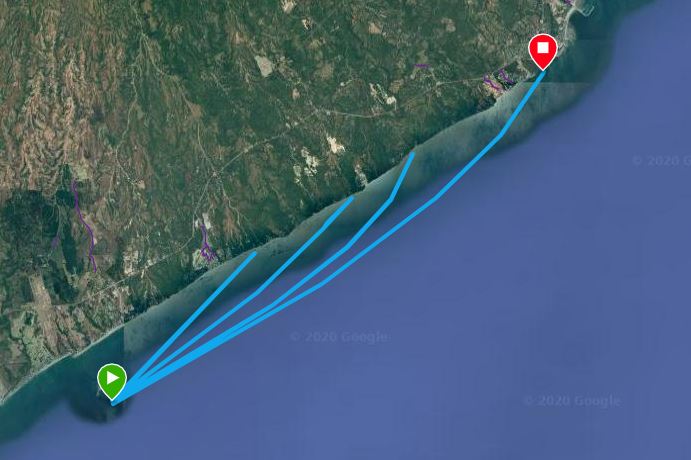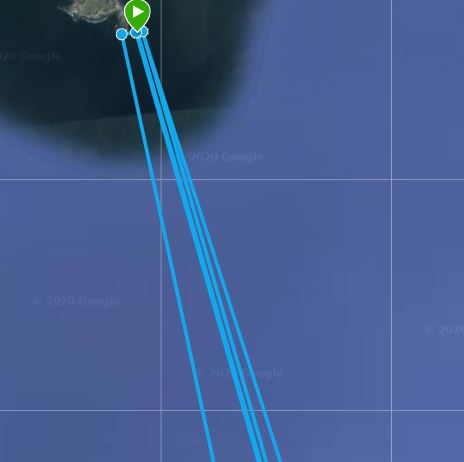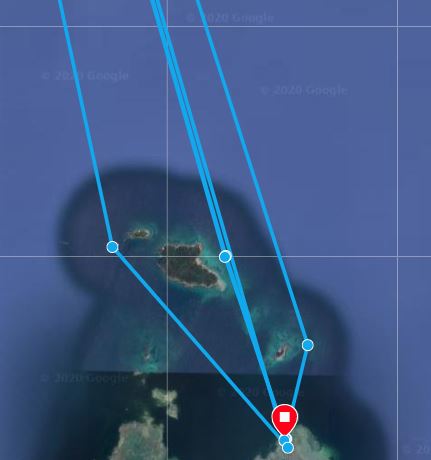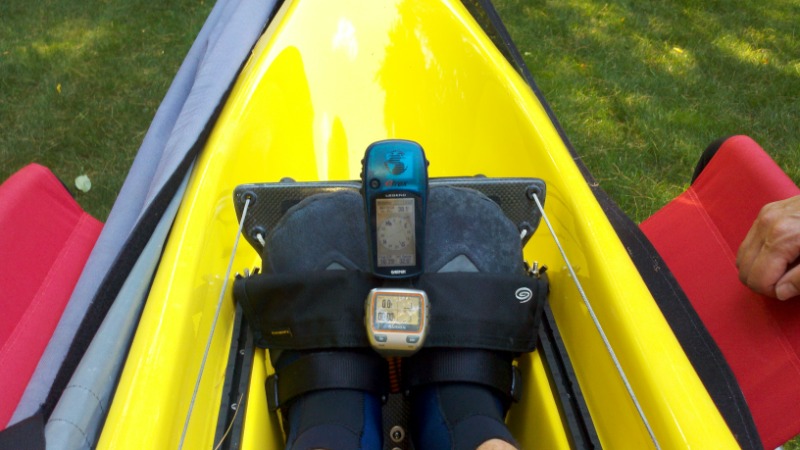- Posts: 410
- Thank you received: 43
Mounting a chart or map so visible while paddling
One issue that can occur when paddling a jagged coastline is that it is easy to lose track of your location, particularly if there are many small islands. An entry to a loch can be mistaken for a gap between islands (or visa-versa), leading to confusion about location.
An OS map (which shows land contours in detail) can be helpful on some coastlines, since you can use it to identify promontories (I am heading for promontory X, which is low-lying. On the way there I will pass Y, which has pronounced peak).
With my middle-aged eyesight, mounting such a map (or nav device) about at foot level is a good thing.
Please Log in or Create an account to join the conversation.
- sarzelopez
-
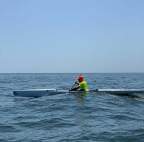
- Offline
- Senior Member
- Panamenian Paddler
I've never used charts but imagine that even with the chart in front of you must be sure that your "reference peak" is in fact the one you are paddling by.
Please Log in or Create an account to join the conversation.
Lighthouses, significant marks (ranging from port lights to postboxes), buoys; this is the sort of information I expect on a chart. I also expect to have the knowledge to read the chart.
I fail to see how a GPS watch is a better solution. If tide, wind cause you to need to change your route, what use are a few GPS waypoints?
Please Log in or Create an account to join the conversation.
Mrcharly, I don’t see how you can keep a chart close enough and useable in a surf ski cockpit. It’s easy with a decked kayak.
However, maybe you can keep a chart HANDY, which does not have to mean mounting iit to the ski. Attach it to yourself or your PFD. You’ll probably need to fold the chart and fit it inside a clear flexible chart case.
Please Log in or Create an account to join the conversation.
Before a big trip, maybe writing nav notes (tidal stream times and directions, notable tidal overfalls, navigation waypoints, that sort of thing) into a small page and strapping that to a thigh or similar.
Please Log in or Create an account to join the conversation.
You might be able to roll up the encased chart (some cases are more flexible than others), rubber band it to stay rolled, and then tether from one or two grommeted corners that they usually come with. Attach the tether to a carabiner to somewhere on your PFD or clothing.
You could also roll a waterproof chart directly inside a small-diameter polyethylene tube with caps, similar to PVC pipe but much lighter and more UV-resistant. Then tether that. IIt’s not instantly useable but could be good for storage between outings,
Have fun!
Please Log in or Create an account to join the conversation.
- zachhandler
-
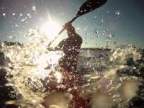
- Away
- Platinum Member
- Posts: 800
- Thank you received: 202
Current Skis: Nelo Vanquish AIR, Epic V10g4, NK 670 double, NK exrcize, Carbonology Feather, Think Jet, Knysna Sonic X
Former Skis: Epic v10g3, Kai Waa Vega, Epic V12 g2, Epic V12 g1, Epic v10 double, Nelo 550 g2, Fenn Elite S, Custom Kayaks Synergy
Please Log in or Create an account to join the conversation.
Really wouldnt be hard to have an extended mounting bracket from either forward bulkhead of behind foot board, to mount something within reach other than using footstrap
kayak fishos regularly rely on this ap to navigate around in the dark when they cant see any landmarks at all. Definitely get you home in a fog
Attachments:
Please Log in or Create an account to join the conversation.
Attachments:
Please Log in or Create an account to join the conversation.
- LaPerouseBay
- Offline
- Platinum Member
- Posts: 338
- Thank you received: 130
If you add a bluetooth GPS antenna and link it to the phone, it will save your battery.
Personally, I'd never venture out in the north Atlantic without an experienced guide and every possible backup system known to man.
I may try the Navionics app. It's only $14.99 for the U.S. maps.
I hate it when the entrance to the harbor is obscured. This time of year can be treacherous on the north shore in low visibility. Squalls come thru, rogue sets across the reef, etc. The glare of the sun this time of year is a big pain in my ass.
I've been charting my runs for many years on Maui's north shore thru Google Earth - to help educate myself on the depths at certain landmarks. Sometimes those landmarks go away. To have a backup of my location is something I've wanted many times. Those maps are very, very nice. Very user friendly and flexible.
downwind dilettante
Please Log in or Create an account to join the conversation.
The Nelo has a bracket on the footstrap, mainly aimed at mounting cameras. I have a map holder for cycling and might see if that will fit on the footrest bracket.
Please Log in or Create an account to join the conversation.
Older model Miry mtb map board with a piece of coreflute cutdown to a smaller size.
Thought about using a cutdown carbon handlebar to mount it to, but ended up putting a carbon sleeve over some plastic conduit.
Step 1: Essentially you're making a carbon tube with flat ends. .
Cut the conduit just wide enough to sit on the top of the footwell, squash the ends of the conduit flat with a heat gun + a vise, then wet out the carbon sleeve and vac or heatshrink it over the plastic conduit.
Step 2: Make some L brackets that are custom shaped to fit the footwell
Cover the sides and top of the footwell with plastic and layup up some carbon strips to make a "L bracket" that goes up the side of the footwell and over the top edge.
Step 3: Join the L brackets to the carbon tube
With the brackets still sitting in place on the boat, go crazy with some scrap bits of carbon and join the L brackets and the carbon tube. Once it's all cured, add some decent quality velcro to the back of the brackets and the footwell to add a bit more security.
Please Log in or Create an account to join the conversation.
Please Log in or Create an account to join the conversation.
You still have to observe what’s around you and use common sense 100% of the time, no matter what device(s) you have.
Make sure any battery-powered device is fully charged. Know what the tidal currents will be doing if you paddle in areas strongly affected by those.
And, although this does not seem to be done by ski paddlers, you may want to carry a spare paddle on some outings, or use something other than the lightest paddle you own.
Please Log in or Create an account to join the conversation.
- Greg Miller
- Visitor
One to try I think.
Please Log in or Create an account to join the conversation.
- sarzelopez
-

- Offline
- Senior Member
- Panamenian Paddler
Tides are regular, so I just always know where im at tide-wise.
I only do 3 routes where the wind could change my landing spot or route. 1 of which is the long off shore one where you can't see anything but water until after about 16kms.
This is how I saw routes on my suunto.
You can change the scale, I used 200m instead of 10km
If no matter what happened I was landing at point X, I just drew that route and followed the path. I can't see any way this can go wrong. The chart would be usefull for drawing the route on the PC going around the sandbars, lighthouses etc. The way I did, I YOLO'd the route on a super low tide, so I could see everything and then drew that one.
Another scenario is where you take off from one place and depending on the conditions you might want to change your landing spot. In my case for this 20km run, I am familiar with 3 beaches in between the real destination, so I draw the route to the 4 possible landing points on the same course,I start on the real route (farthest from the shore) and if I want to fold, I just jump to another line. Again, I have it plugged as if it was one big 90km or whatever route, with the lines branching out from the starting point.
The last scenario is for the off shore, where the landing spot is the same but depending on the wind you can take about 3 different lines. Again, I put the 3 lines in the same "course" and depending on the forecast 15 minutes before the start, I know which one to follow. If I'm taking the one in the center but the waves/wind sart coming in strong form my left, I can either adjust or completely jump to another line.
PD. This are training/race route planning, I guess some similar planning can be done for expeditions, sightseeing, touring.
Quick Edit: the best scale is 200m
Attachments:
Please Log in or Create an account to join the conversation.
- SpaceSputnik
- Offline
- Platinum Member
- Posts: 526
- Thank you received: 42
FSKs such as Epic 18x are much more livable in long haul scenarios. You can mount all sorts of stuff on it and reach it too. You can also strap a map to your spray skirt.
Please Log in or Create an account to join the conversation.
- Epicpaddler
-

- Offline
- Elite Member
- Posts: 256
- Thank you received: 33
I agree that a sea kayak is way more user friendly when I comes to mounting/reading charts. I tried taping a map of a racecourse on the deck of my surfski one time for a long race. Besides not being able to see it well, it quickly got water spots all over the waterproof cover and I couldn't read it. I'm a tech nerd, but I haven't had the best experience relying on electronics when in a saltwater environment. I'm sure you could find a way to mount/strap/ a chart to your thigh. Necessity is the mother of invention. Let us know what kind of solution you come up with. i'd love to see it.
Please Log in or Create an account to join the conversation.
- zachhandler
-

- Away
- Platinum Member
- Posts: 800
- Thank you received: 202
Current Skis: Nelo Vanquish AIR, Epic V10g4, NK 670 double, NK exrcize, Carbonology Feather, Think Jet, Knysna Sonic X
Former Skis: Epic v10g3, Kai Waa Vega, Epic V12 g2, Epic V12 g1, Epic v10 double, Nelo 550 g2, Fenn Elite S, Custom Kayaks Synergy
Please Log in or Create an account to join the conversation.
- ccchappell
-

- Offline
- Senior Member
- Posts: 66
- Thank you received: 25
Chris
Attachments:
Please Log in or Create an account to join the conversation.
Latest Forum Topics
-
- Paddling with rotator cuff injury
- 48 minutes ago
-
- McGregor Rhythm questions
- 3 days 3 hours ago


